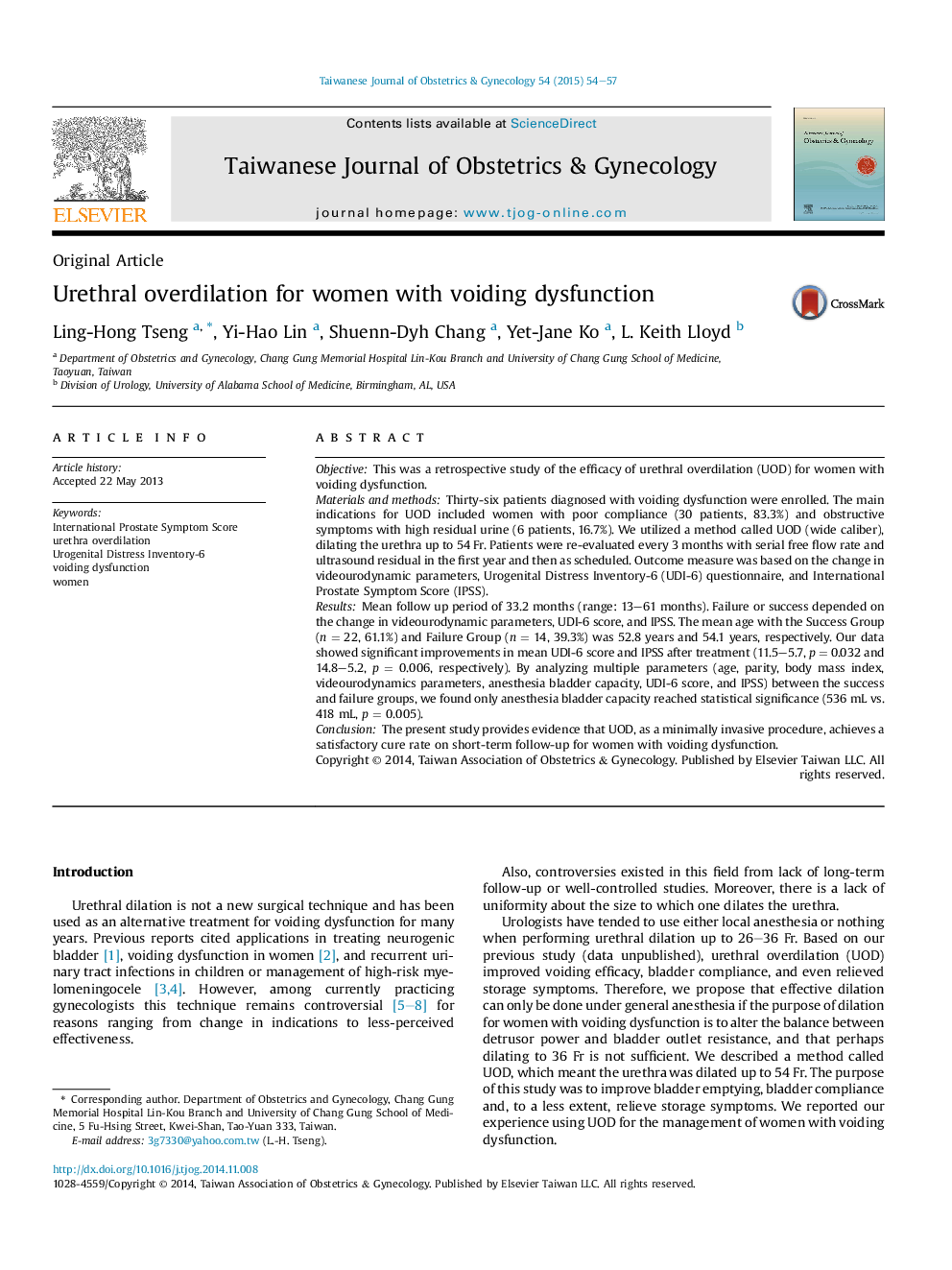| Article ID | Journal | Published Year | Pages | File Type |
|---|---|---|---|---|
| 3974916 | Taiwanese Journal of Obstetrics and Gynecology | 2015 | 4 Pages |
ObjectiveThis was a retrospective study of the efficacy of urethral overdilation (UOD) for women with voiding dysfunction.Materials and methodsThirty-six patients diagnosed with voiding dysfunction were enrolled. The main indications for UOD included women with poor compliance (30 patients, 83.3%) and obstructive symptoms with high residual urine (6 patients, 16.7%). We utilized a method called UOD (wide caliber), dilating the urethra up to 54 Fr. Patients were re-evaluated every 3 months with serial free flow rate and ultrasound residual in the first year and then as scheduled. Outcome measure was based on the change in videourodynamic parameters, Urogenital Distress Inventory-6 (UDI-6) questionnaire, and International Prostate Symptom Score (IPSS).ResultsMean follow up period of 33.2 months (range: 13–61 months). Failure or success depended on the change in videourodynamic parameters, UDI-6 score, and IPSS. The mean age with the Success Group (n = 22, 61.1%) and Failure Group (n = 14, 39.3%) was 52.8 years and 54.1 years, respectively. Our data showed significant improvements in mean UDI-6 score and IPSS after treatment (11.5–5.7, p = 0.032 and 14.8–5.2, p = 0.006, respectively). By analyzing multiple parameters (age, parity, body mass index, videourodynamics parameters, anesthesia bladder capacity, UDI-6 score, and IPSS) between the success and failure groups, we found only anesthesia bladder capacity reached statistical significance (536 mL vs. 418 mL, p = 0.005).ConclusionThe present study provides evidence that UOD, as a minimally invasive procedure, achieves a satisfactory cure rate on short-term follow-up for women with voiding dysfunction.
